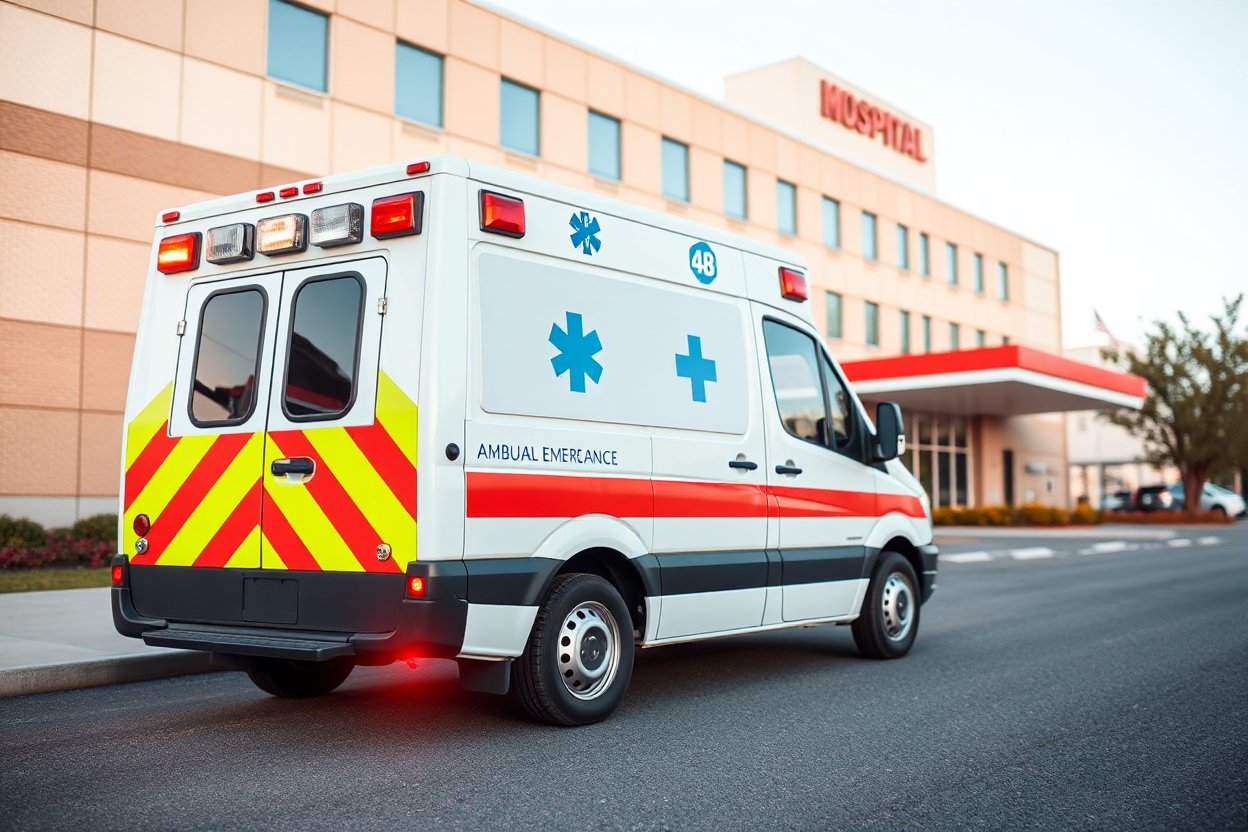Emergency Medical Attention Saves Lives. New data show that the time it takes for the ambulance to respond to a heart attack or stroke has gone up.
NHS England’s most recent data for December 2024 found that, on average, ambulances arrived at heart attack and stroke patients in 47 minutes, five minutes longer than the previous month, when ambulances took 42 minutes to arrive.
The response for category 2 calls of 30 minutes was the average set by NHS England for 2024/25, but they exceeded this.
Pre-pandemic, the target for category two calls – which are some of the most serious cases, like suspecting a heart attack or a stroke – was an average of 18 minutes. In the meantime, the target was extended with both the onset of the influenza season and its pressures on the healthcare system and the long delays causing disjointed care The new data also found
Heighligts
The new data also found
Also, in England, at the end of 2024, there were significant differences in how ambulances responded. Nevertheless, no mainland ambulance service arrived within the revised 30-minute period. The slowest ambulance response time for December 2024 came from East Midlands, with an average time of 66 minutes for category two calls.
Patient care and management in the cardiology department slightly improved regarding the heart care waiting list for November 2024, which was released today. Nevertheless, as much as 40% of people on the list are still waiting over 18 weeks when urgent cardiac care is required.
People with heart disease have an increased risk of becoming disabled or even dying early if they wait for a long time before receiving the necessary treatment.
Most recent records from NHS England indicate that the heart care waiting list was at 420,589 in November 2024, less than 420,945 in October.
Though the number of people waiting over four months for time-critical cardiac care rose to 169,620 in November, up from 169,280 in October, the number of those waiting for cardiac care was the same as in the previous month: 93% were seen within four months, and 96% were seen within three months.
The number of people waiting over a year for cardiac care increased to 9,885 in November from 9,396 in October.
Broken pipeline of care
Dr. Sonya Babu-Narayan, the Clinical Director, said: “Heart attacks and strokes are life-threatening emergencies. With each minute wasted, the risk of severe brain or heart damage and death is increasing. We cannot view the dangerous ambulance wait times as an acceptable new normal. “This outrageous disturbance to emergency care would reflect a broken care pipeline for heart patients. Every step in the process is obscured and is slowed down, from prevention and diagnosis to treatment and aftercare. Heart care waiting times for tests and treatments remain at a near-record high level, even when waiting too long seems to be lethal. “This week, the Government presented a solution to reduce waiting lists, which is good. In addition, the country needs to provide cardiovascular patients and their families with a plan for treating patients with heart disease to make cardiovascular prevention the emergency treatment and elective heart care the best fit for the future. “If you feel the symptoms of a heart attack, please don’t delay and call 999 immediately. It’s still the best thing to do, and it might save your life.
Understanding 911 Emergency Support for Heart Attack Victims in the United States
911 is the emergency number that is the backbone of most Americans from state to state. Initiated with the sole intent of guaranteeing quick responses on the part of the police, arson, and medical services, the emergency number is the connection between the callers and the medical facility operators. It is especially imperative whenever a life is at stake, as is the case with a heart attack, which happens unexpectedly, and every second is of the essence. During such events, calling 911 is the only hope of saving lives.
Myocardial infarction, more commonly known as heart attack, is the top reason for calling 911 in the United States. The key goal is to use the energies provided by the approach to guarantee prompt reaction and comprehensive treatment. After the patient submits the address, the dispatcher will rapidly analyze the case by inquiring about the patient’s medical history, symptoms, and location. These questions help the dispatcher categorize the case and geting the correct emergency department.
Once EMTs and paramedics have been dispatched, they come with advanced life-support equipment. Their primary responsibility is stabilizing the patient before they can get to the hospital. This action is called using oxygen, CPR if necessary, and defibrillators to bringing the heart rate back to normal. Along the path, they also may provide life-saving drugs such as aspirin or nitroglycerin to open up the vessels that carry blood to the heart and ease its workload.
Time is a crucial element that cannot be ignored when dealing with cardiovascular diseases. Numerous researches pointed out the fact that the immediacy of emergency services leads to higher chances of heart attack patients’ survival. By calling the emergency hotline, trained personnel can come quickly, and therefore, the gap between the start of the symptoms and the treatment can be reduced, which will lead to the patient’s recovery. Moreover, EMS teams often give vitally important information to the care center when they are on the way so the staff can get ready for the patient.
The 911 system also aims to provide guidance to bystanders beyond immediate care. The dispatchers are trained to tell callers how to do chest compressions or use an automatic external defibrillator (AED) if one is present. Consequently, the main actions are taken, and the chances of the patient’s recovery are highest even if the EMTs are still on their way.
It is essential to warn people about the symptoms of a heart attack so that they will know how to use the emergency system. The ubiquitous signs are the pain in the chest, the feeling of tightness, the shortness of breath, the yawning, and and the cold sweating,, among others. If someone can identify these symptoms ahead of time and call 911 straight away, they will thus avoid the risk of the possible negative outcome of this heart problem.
The 911 emergency system is the foundation of the American medical response for emergency cases such as heart attacks. Its proficiency, combined with the hospitals’ emergency workers’ expertise, ensures the community stays safe through the help they need at the right time. To be a good listener, it is also necessary that the citizens understand their part in the system. DoingDoing somay cause the police to skip some formalities, which could have caused a delay in the process.
On the contrary, a medico-legal expert at Bronx Medical Center suggested that 911 dispatchers immediately dispatch an ambulance to the scene. Call 911 immediately to begin and be sustained with life-saving services.


